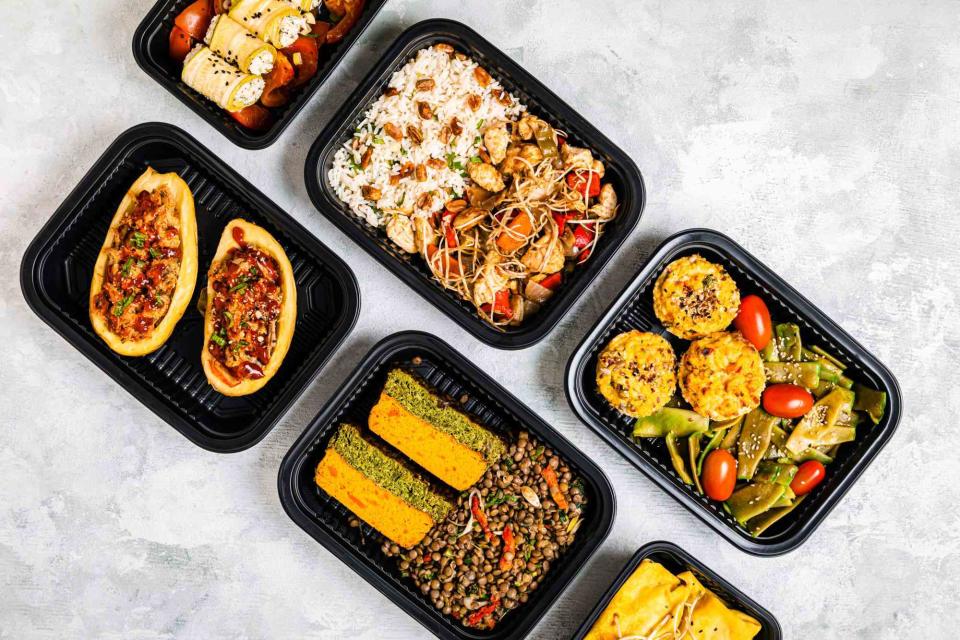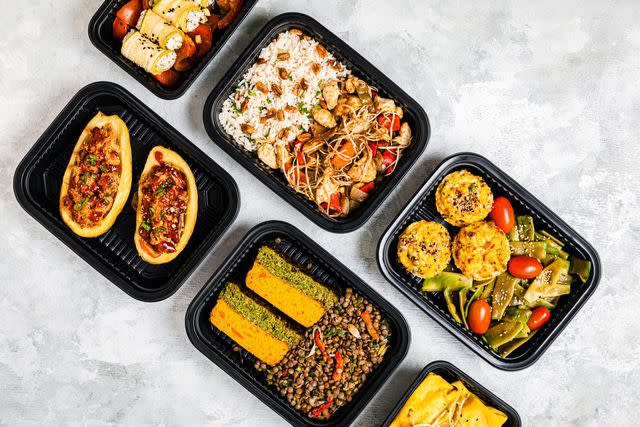Should You Reuse Takeout Containers From Restaurants?
Experts weigh in on when it is safe to use takeout containers for food storage and heating up leftovers.

We're getting better at reducing our kitchen waste. We store foods properly to keep them fresh longer, compost, and try to buy food in recyclable containers at the supermarket whenever possible. But what are we to do with all those restaurant takeout containers we've collected? Reusing them for food storage at home seems like a simple way to save money and reduce waste—but whether we should is complicated.
"Most food-safe containers from restaurants can be used as storage for a short period of time, as these plastics are usually meant for food-grade applications," says Bryan Quoc Le, Ph.D, food scientist, food and beverage industry consultant, and author of 150 Food Science Questions Answered. Here's how to help you determine which takeout containers you can use, and how long it's safe to keep using them.
Related: Best Food Storage Containers for the Refrigerator
General Food Safety
When you bring home leftovers from a restaurant meal or have takeout you don't finish, use the containers the restaurant packed your food in for storing it in the fridge until you're ready to eat it, following general food safety guidelines like not letting the food sit out for more than two hours. Best practice is to refrigerate it as soon as you get home or the leftovers have cooled.
Reheating
When you're ready to eat your leftovers, transfer the food to another container if it needs to be reheated. "One of the issues is that when these containers are reheated, either through microwaving or washing in the dishwasher, they will leach out plasticizers over time," says Le.
Washing
Le says that plastic takeout containers should not be washed in the dishwasher if you intend to reuse them. To hand wash them, you should make a sanitizer solution with 200ppm chlorine bleach, says Shawn Matijevich, lead chef of online culinary arts and food operations at the Institute of Culinary Education. "Put that in a spray bottle and mist them after you wash and let them air dry," he says.

Should You Reuse That Takeout Container?
Restaurants and other food businesses use a variety of different types of takeout containers. You must determine what a container is made of before you know if you should reuse it. It's easy to see and feel if something is made from glass, cardboard, or styrofoam, but plastic is tricker.
Glass
If the container happens to be glass, clean and reuse it as long as it is in good condition, with no visible cracks or other damage.
Styrofoam and Cardboard
Styrofoam and cardboard containers are impossible to clean and should be avoided for reuse as they disintegrate quickly.
Polystyrene
"Polystyrene should be avoided as a storage container because it easily fragments and can easily leach styrene, the monomer used to produce polystyrene. It is also not resistant to continuous use and heating," Le says.
Plastic
Plastic containers are more complicated. You need to know what type of plastic a container is made of.To figure that out, use the recycling symbol on the bottom of the container, which corresponds to the kind of plastic. Refer to the Tufts University Plastics by the Numbers guide (or this one from PBS) to determine if you want to reuse them.
And remember that if you do decide to reuse them, they should not be used to reheat food or washed in the dishwasher.
How Long It's Safe to Reuse Containers
Glass containers can be reused while they are in good condition. While there is no standard for when to stop using a plastic takeout container, Le and Matijevich recommend tossing them once they start to appear worn or scratched. Generally speaking, you'll want to throw them away after a few months to reduce the risk of bacterial build-up or leaching plastic.
"The end result (of reusing them) is an increased intake of compounds that disrupt the endocrine system over time," says Le. "Additionally, these containers will become more and more brittle over time, leading to a higher risk of microplastics flaking off and becoming ingested in your food."
And always get rid of them if they are stained or otherwise not in good condition. "Sometimes, it is difficult to remove all traces of the food when you have something with a lot of fat. You'll feel a greasy film all over the inside of the container. If you can't remove this, then it is time to toss them," Matijevich says.
Bring Your Own Safe Containers
If you tend to eat out often and have leftovers to take home, consider bringing your own glass reusable container with you. That way, you reduce the use of disposable containers and ensure your food is stored safely. Restaurants are generally happy to let you pack up your own leftovers to take home.

